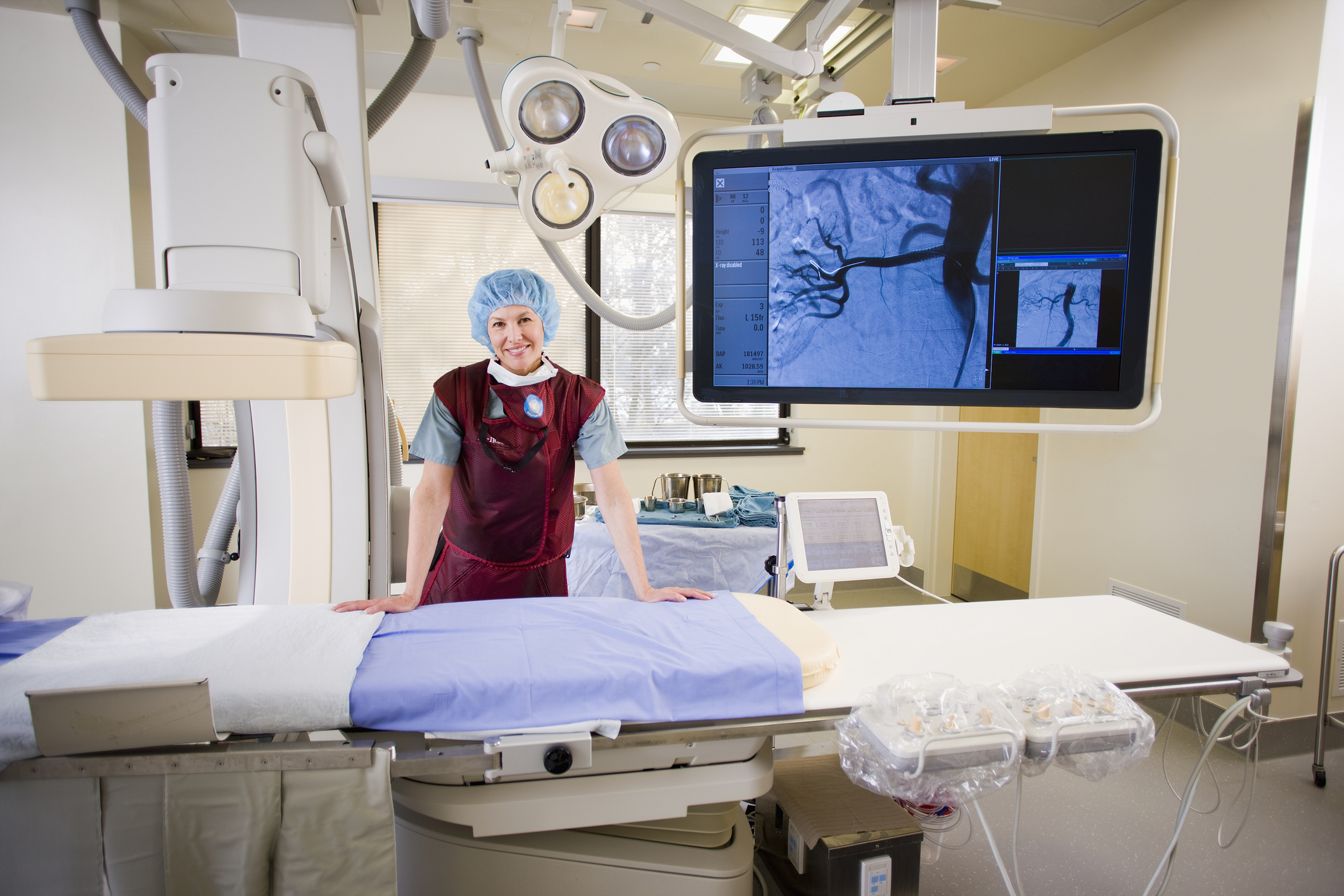
Interventional Radiology
Interventional radiology offers image-guided, minimally invasive surgery options to diagnose and treat many conditions, including cancer, strokes and blocked blood vessels.
Our patients who undergo interventional radiology procedures experience less risk, less pain, shorter or no hospitalization and a quicker recovery.
To accomplish these minimally invasive procedures, radiologists rely on imaging technology:
Some procedures require oral or IV contrast and will use local anesthesia or light sedation. Occasionally, a procedure will involve general anesthesia.
Conditions treated with interventional radiology
Interventional radiology helps people with a wide range of conditions. Interventional radiology techniques can be used to treat and evaluate:
- Abdominal aortic aneurism
- Back pain
- Blocked blood vessels
- Blocked fallopian tubes
- Cancer
- Compression fractures in the vertebrae
- Deep vein thrombosis
- Female and male infertility
- Heart conditions
- Internal bleeding
- Kidney stones
- Stroke
- Uterine fibroids
- Varicose veins
Interventional radiology procedures
With image-guided techniques, interventional radiologists can provide our patients with many solutions and treatments, including:
- Ablation of tumors – Kill a tumor using heat, cold or electrical energy. Radiologists also use ablation for conditions such as varicose veins, endometriosis and irregular heartbeats.
- Angioplasty – Insert a catheter to open a blocked blood vessel and improve blood flow.
- Biopsies – Obtain a sample of a tumor to test it.
- Cerebral aneurysms – Prevent an artery wall from bursting in the brain by inserting a coil or stent.
- Embolization – Cut off the blood supply to stop bleeding or deprive blood flow to a tumor, uterine fibroid or enlarged prostate, for example, which shrinks it and kills cells.
- Kyphoplasty – Inject cement into the vertebrae to treat spine fractures.
- Percutaneous drainage – Drain an abscess or infection
- Radiotherapy – Use high-energy ionization radiation to damage cancer cells so they can’t grow or divide.
- Thrombolysis – Open vascular blockages to allow blood to flow correctly. Thrombolysis is used to treat strokes.
Interventional radiology can also provide palliative care to increase the comfort level for people whose diseases are no longer treatable through various methods.
Radiologists use small incisions to reach the area they are treating to shorten patients’ recovery times and reduce pain over more traditional, open surgery.

Spartanburg Regional interventional radiology team and experience
At Spartanburg Regional, your interventional radiologist is board certified with the American College of Radiology and works with a highly trained staff that includes:
- Anesthesiologists or certified registered nurse anesthetists
- CT techs
- Nurse practitioners
- Registered nurses
- Ultrasound techs
- Vascular interventional certified radiology techs
We ask you to come in 15 minutes before your procedure to register. However, if your procedure requires contrast, we ask that you arrive an hour early. Your procedure could last anywhere from an hour to up to six hours. A patient's average time in an interventional radiology procedure is around three hours from check-in to checkout.
In most cases, you will be able to go home that day. Occasionally, some procedures require an overnight stay.











